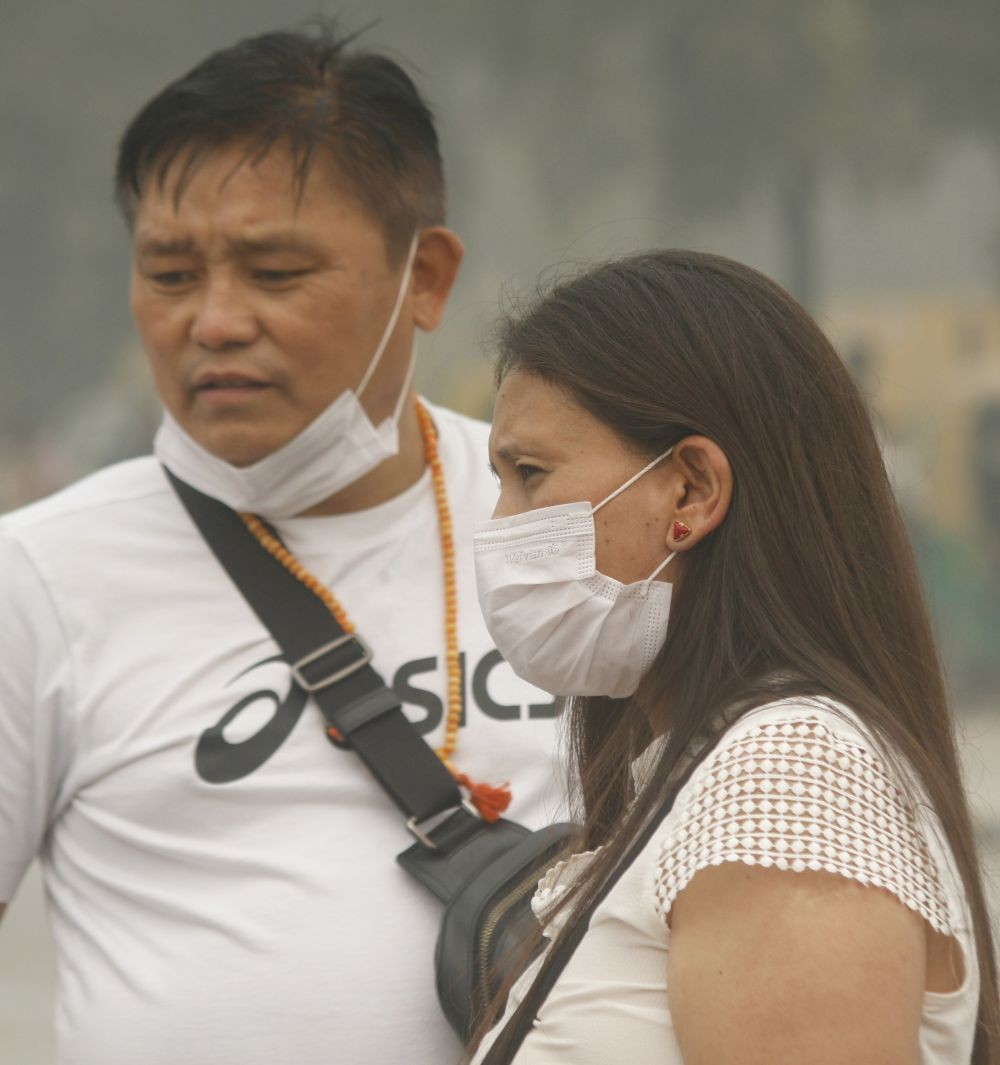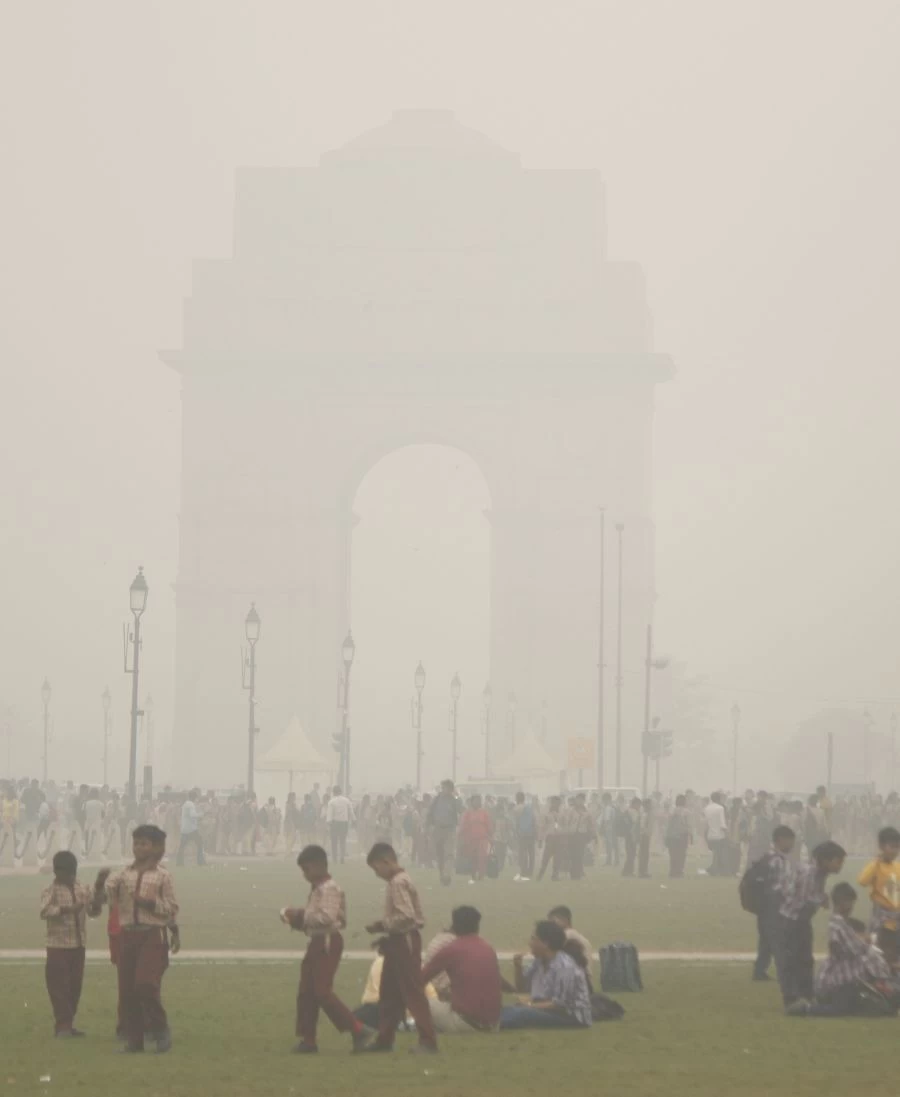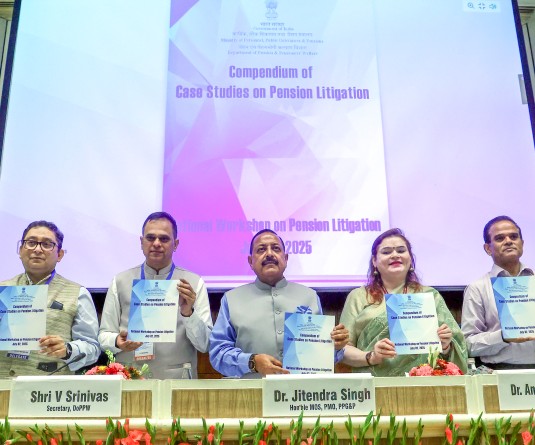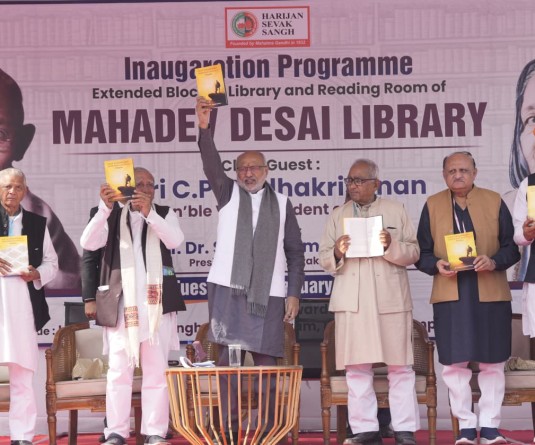New Delhi: Visitors wearing mask walk at the Kartavya Path amid dense smog near the India Gate in New Dellhi, Saturday, Nov. 4, 2023. Delhi-NCR region is winessing smog amid a surge in farm fires and unfavourable weather conditions leading to a spike in the air pollution levels.(IANS/Qamar Sibtain)

New Delhi, November 4 (IANS) Delhi has been grappling with a sudden and alarming spike in air pollution levels, shortening the lives of its residents by 11.9 years.
According to this year's air quality life index, compiled by the University of Chicago's energy policy institute, the residents of Delhi are on track to lose 11.9 years of life expectancy due to the detrimental air they breathe.
The city's residents are once again finding themselves in the midst of a hazardous smog. This troubling development has left many wondering about the causes behind this sudden deterioration in air quality.
Delhi witnessed a harrowing surge in air pollution, with a thick and toxic smog engulfing the city.
This alarming development signifies the beginning of the annual pollution season, which has now become a recurring catastrophe for the national capital.
In response to the deteriorating air quality, authorities took several precautionary measures, including the closure of schools and a ban on non-essential construction activities in the city.

The air quality index in Delhi soared to 500, the highest possible reading, surpassing the World Health Organization's (WHO) recommended healthy limit by a staggering 100 times.
One of the primary factors contributing to this perilous situation is the recent surge in farm fires in the neighbouring state of Punjab, where a 740 per cent increase in such fires was reported in just a single day. These agricultural fires release a substantial volume of pollutants into the atmosphere, exacerbating Delhi's air quality problems.
Despite the presence of pollution, early warning systems in Delhi reportedly failed to predict the rapid deterioration in air quality that unfolded late on Thursday (November 2), catching both authorities and residents off guard.
Delhi, a sprawling metropolis housing approximately 33 million people, consistently garners the dubious distinction of being the world's most polluted city.
Several factors have contributed to the surge in air pollution, including a combination of meteorological conditions, vehicular emissions, industrial activities, and crop burning.
Stubble burning
One of the primary culprits behind the sudden surge in air pollution is the practice of stubble burning in the neighbouring states of Punjab and Haryana. Farmers in these regions burn the remnants of their paddy crops after the harvest season, releasing large volumes of particulate matter and greenhouse gases into the atmosphere.
"This annual phenomenon has become a significant contributor to Delhi's worsening air quality during the post-monsoon period. Despite government efforts to discourage this practice and not using the tools provided on subsidies to cut the paddy, enforcement remains a challenge," said former Haryana scientist Chandra Veer Singh.
Meteorological factors
Delhi's geographical location also plays a crucial role in the sudden spike in air pollution. The region experiences atmospheric stagnation during the winter months, which traps pollutants close to the surface.
Calm winds, temperature inversions, and reduced vertical mixing of the atmosphere further exacerbate the problem. This stagnant air acts as a lid, preventing pollutants from dispersing and diluting, resulting in the accumulation of harmful particulate matter and gases.
"The onset of winter brings temperature inversions, trapping pollutants closer to the ground. These stagnant atmospheric conditions prevent the dispersion of pollutants, leading to the accumulation of smog in the region," said a senior India Meteorological Department (IMD) official.
Traffic emissions
Delhi's ever-increasing vehicular population continues to be a major source of air pollution. The high density of vehicles on the city's roads contributes to the release of pollutants like nitrogen oxides (NOx) and particulate matter (PM).
"The problem is compounded by outdated and heavily polluting vehicles still plying on the roads. Although the government has made efforts to transition to cleaner fuels and promote electric vehicles, the transition is gradual, and the impact on air quality is not immediate," say the experts.
Industrial emissions
Delhi is home to a sizeable number of industries, and their emissions are another significant factor contributing to the city's worsening air quality. Several places in the city are also hub to illegal factories contributing to pollution and working under the nose of government with no restriction or check on them.
"While there are regulations in place to control industrial emissions, enforcement remains a challenge, and some industries may not be adhering to pollution control norms. This contributes to the overall air pollution burden in the city," say the experts.
Construction dust
Rapid urbanisation and construction activities in Delhi result in a substantial amount of dust and particulate matter being released into the air. Construction dust contains fine particulates that can easily become airborne, adding to the already polluted atmosphere.
Efforts to mitigate air pollution
Recognising the urgency of the situation, both the Central and state governments have taken steps to address the problem. Measures such as the Graded Response Action Plan (GRAP), banning construction activities, restrictions on industrial operations, and the promotion of cleaner fuels have been implemented to mitigate the effects of air pollution. Additionally, the introduction of electric public transportation and the promotion of cycling and pedestrian-friendly infrastructure are steps towards reducing vehicular emissions.
Public awareness
Public awareness and individual responsibility also play a pivotal role in tackling air pollution. Citizens are encouraged to take steps such as reducing personal vehicle usage, carpooling, using public transport, and adopting sustainable waste management practices.
Adopting eco-friendly Diwali celebrations by refraining from firecrackers can make a significant difference in reducing air pollution during the festive season.
"The Central and state governments have also worked to incentivise farmers in Punjab and Haryana to adopt alternative methods for crop residue management. Financial incentives and subsidies are being offered to reduce stubble burning and encourage the use of crop residue in a more environment friendly manner," said an expert.
While these efforts are important, a long-term solution to Delhi's air pollution problem will require sustained commitment from all stakeholders, including residents, industries, and the agricultural community.
"Reducing air pollution necessitates a holistic approach that involves not only local but also regional and national coordination," the expert added.






